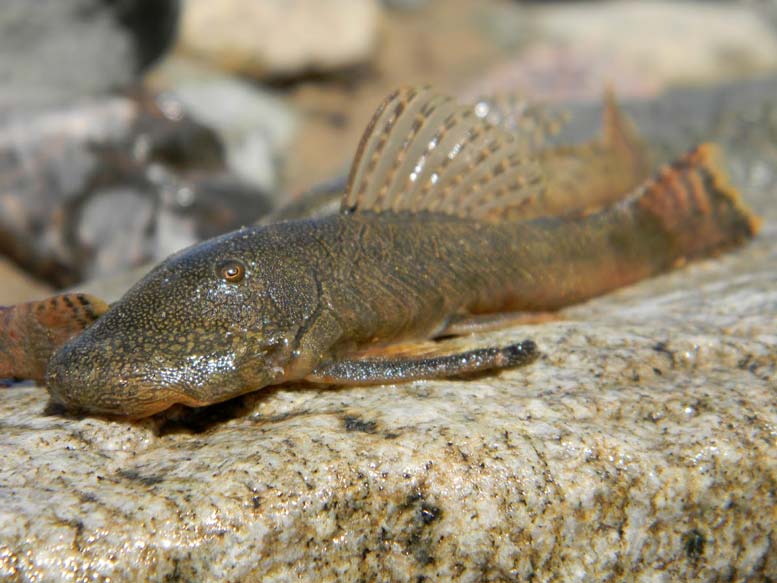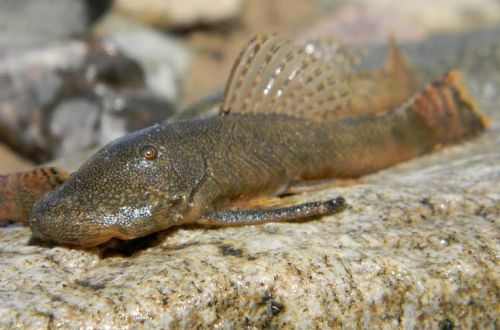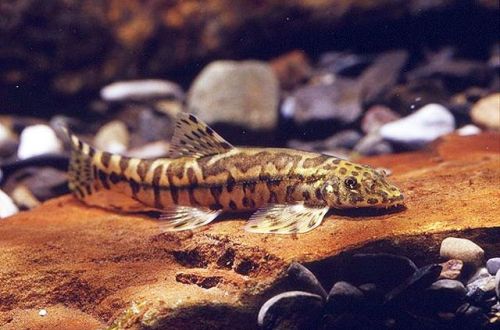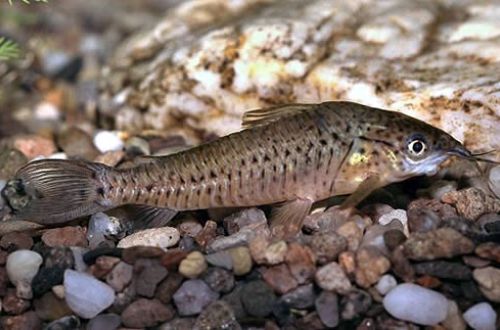
Chetosome Fisher
Fisher’s chaetosoma, scientific name Chaetostoma fischeri, belongs to the family Loricariidae (Mail catfish). In nature, it lives in the river systems of Central America and several rivers of South America flowing into the Caribbean. Inhabits shallow parts of rivers with rocky substrates and fast currents.
Contents
Fisher’s chaetosoma (Chaetostoma fischeri)
 Fisher’s chaetosoma, scientific name Chaetostoma fischeri, belongs to the family Loricariidae (Mail catfish)
Fisher’s chaetosoma, scientific name Chaetostoma fischeri, belongs to the family Loricariidae (Mail catfish)

Description
Adult individuals reach a length of up to 30 cm. The catfish has a gray nondescript color, a flattened body with a large head and a large mouth located on the lower part, which simultaneously acts as a sucker. “Suction cup” is necessary for reliable retention at the bottom in conditions of strong current.
The body is covered with rows of hard bony plates that protect against the teeth of small predators. The same purpose is served by the first rays of the fins, which are noticeably thickened in comparison with others and are sharp spikes. The pectoral fins are located closer to the abdomen and are oriented in such a way as to help the fish stay on the surface of the ground (stone, boulder).
Brief information:
- The volume of the aquarium – from 500 liters.
- Temperature – 23-27°C
- Value pH — 6.0–7.8
- Water hardness – 5–19 dGH
- Substrate type — stony
- Lighting – subdued
- Brackish water – no
- Water movement – moderate / strong
- The size of the fish is up to 30 cm.
- Nutrition – plant-based food
- Temperament – conditionally peaceful
- Keeping alone or in a group in large aquariums
Maintenance and care, arrangement of the aquarium
Fisher’s chaetosoma is rarely used as an aquarium fish and is practically not found on the markets of European countries. For this reason, there is no detailed information on cases of keeping in home aquaria.
It is believed that the optimal tank size for one catfish starts from 500-600 liters. In the design, it is recommended to recreate an environment reminiscent of a mountain river bed – a rocky substrate with snags and a moderate current. Aquatic vegetation is not usually used.
Food
In nature, it feeds on algae deposits from the surface of stones and snags. In a home aquarium, specialized algae-based foods, such as sinking pellets, tablets, briquettes fixed on the bottom, should be fed. In addition to plant components, protein supplements should be present in the composition, since along with algae, the catfish consumes the organisms living in them.





